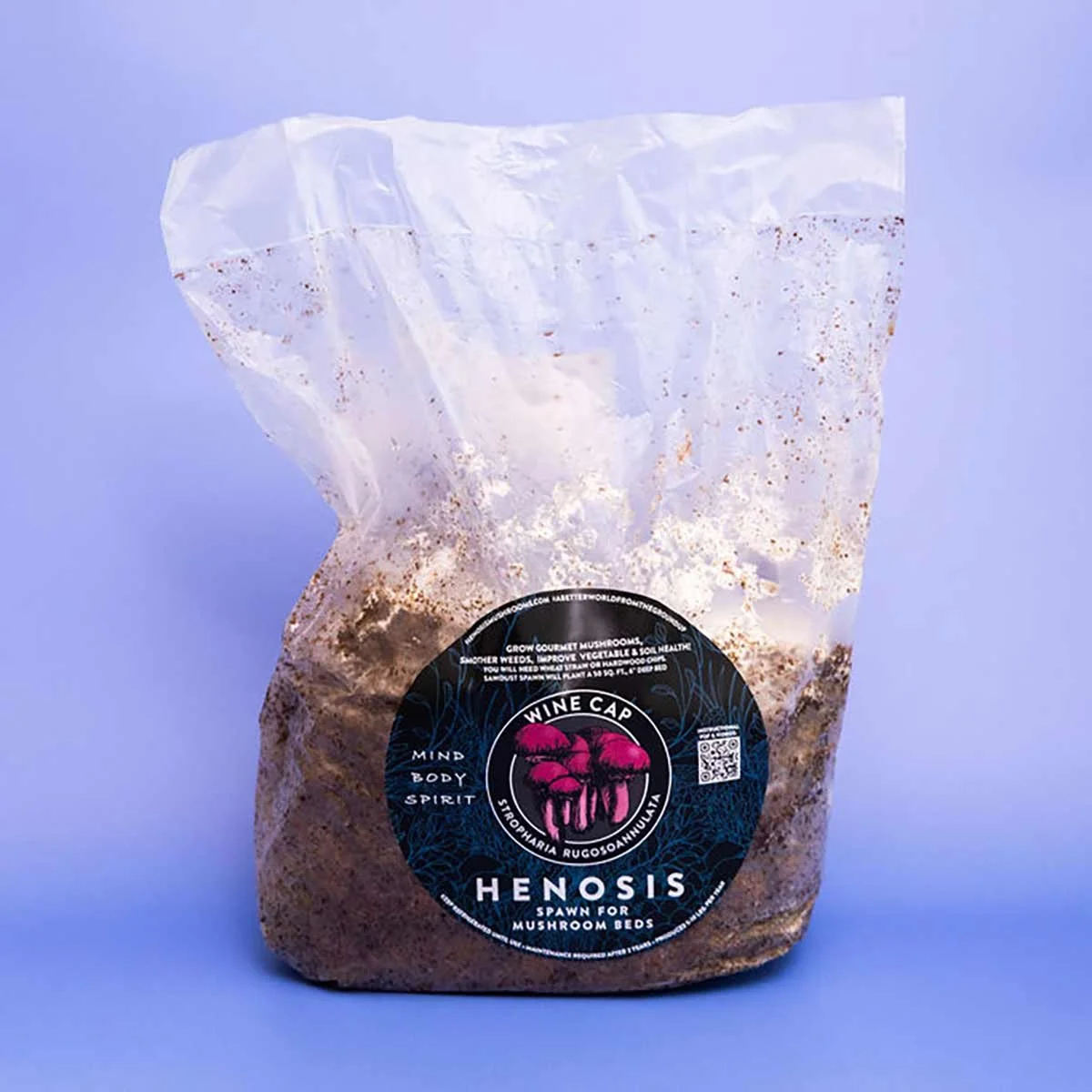Gardening with Wine Cap Mushrooms: Harness the Power of Living Myco Mulch
Have you ever wanted to add mushrooms to your garden? Are you looking for a cover crop to help you add nutrients to your soil? Look no further than the Wine Cap mushroom! This garden powerhouse has a portobello-like flavor, and can grow to huge sizes. Wine Cap Mushrooms (Latin name Stropharia rugosoannulata), don’t just provide bountiful yields of delicious mushrooms - they also bring major benefits to your garden!
The Wine Cap's Preferred Habitat
Wine cap mushrooms thrive in the company of hardwood chips and straw. We do not recommend using chips from pine, cedar, osage orange, or black walnut trees. A key to their success lies in varying the particle sizes within the bed, aiding in moisture retention and fostering an ideal growth environment. It's advised to avoid incorporating large pieces of wood, as they slow down colonization and create excess air space within the bed. Try to opt for freshly cut wood chips (aged up to 6 months) to give your wine cap mushrooms a competitive edge against competitors (fungal and microbial). Many enthusiasts have discovered success by sourcing chip mixes from local arborists – a fantastic free resource that can significantly contribute to your mushroom gardening venture. Just try to communicate with the arborist to make sure that the tree varieties included are conducive to mushroom spawn.
Benefits Beyond the Harvest
Nutritional Delights: Beyond their captivating appearance, wine cap mushrooms are a nutritious addition to your diet. Rich in vitamins, minerals, and antioxidants, they enhance the flavor profile of your dishes while contributing to your overall well-being.
Environmental Stewardship: By cultivating wine cap mushrooms, you're engaging in a sustainable practice that contributes to the health of our environment. These fungi play a crucial role in decomposing organic matter, returning nutrients to the soil, and promoting healthy ecosystems. Wine Cap mushrooms will quickly break down mulch, creating wonderful rich soil for plants to enjoy.
Water Retention: By helping to add nutrients to your soil, Wine Cap mushrooms will also aid with water retention in your soil, providing a vital service during hot summer months, even when the fruiting body of the mushroom is dormant beneath the mulch.
Attracting Helpers and Trapping Predators: Wine Cap mushrooms will add natural diversity to your garden, and help attract beneficial pollinators. At the same time, they are working constantly behind the scenes to trap and consume pesky predatory nematodes. Truly the best of both worlds!
Nutrient Sharing: In the same way that mushrooms in the forest share nutrients with surrounding trees via their vast mycelial network, the wine cap mycelium will facilitate the sharing of vital nutrients between your wine cap mushrooms and other plants. For this reason, we recommend co-planting this spawn in between rows of vegetables, or even fruit trees!
Getting Started
See our video below for our step-by-step process for planting a Wine Cap Bed, or scroll down for the written instructions:
Get our instructional PDF here.
Conclusion
As you delve into the world of cultivating wine cap mushrooms, you're not only embarking on a journey of culinary delights but also contributing to the well-being of our environment and community.Connect with nature, nurture your personal health, and make a positive impact – all while savoring the delicious rewards of your labor. Cheers to a bountiful harvest and a fulfilling journey into the realm of wine cap mushrooms!
Check out the graphic below for our summary of research by Lindsey Bender of Field & Forest Products, based on a study conducted by Field & Forest Products, in conjunction with North Central SARE, the USDA, the National Institute of Food and Agriculture, and the US Department of Agriculture:


